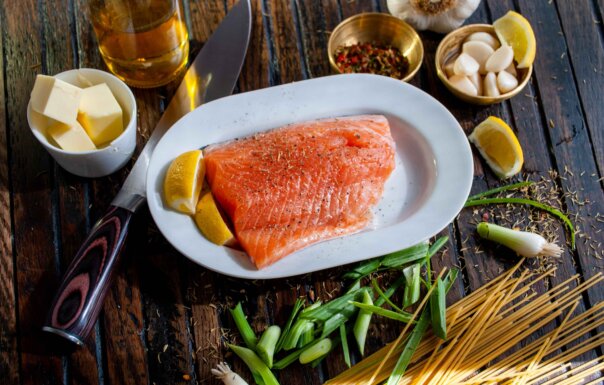Salmon is an incredibly popular fish in America. Praised as a healthy seafood choice by many sources, salmon is delicious and versatile, making it a great choice for any meal of the day. Salmon aficionados will tell you that there are countless ways to prepare this amazing ocean protein.
If you’re someone who enjoys preparing and eating salmon, you may be wondering how to keep it exciting. With this list of techniques, even the most inexperienced home cooks can improvise with their favorite flavors and side dishes. Plus, salmon is one of the best sources of dietary Omega-3 fatty acids, which have various health benefits. A recent review suggests that eating three grams of omega-3 a day is enough to lower blood pressure, which can lead to other health benefits.
Numerous studies have linked omega-3 fatty acids to increased cognition and alleviation of symptoms associated with Alzheimer’s disease. The current research suggests that omega-3 DHA, found in salmon, may have preventative effects, especially for individuals carrying the ApoE4 gene that doubles the chances of developing dementia. By maintaining high levels of DHA, individuals may live almost 5 years Alzheimer’s-free, reducing the economic costs and related stresses associated with care, treatment, and management of the disease.
With so many scientific and culinary experts agreeing that salmon is great for you, it’s time to turn our attention to making it taste great. Here are the top five best ways to cook salmon, according to our expert culinary sources. Let us know your favorite way to prepare this nutritious fish in the comments below!
Best Ways to Cook Salmon, According to the Pros
1.Baking salmon in the oven is a straightforward and healthy way to cook salmon with minimal effort. To begin, it’s recommended to preheat the oven to 400°F (200°C) for most recipes. Next, choose your preferred seasoning. Salt, pepper, olive oil, freshly squeezed lemon juice, or spice combos are all excellent choices. It’s important to season both sides of the salmon evenly for the best flavor.
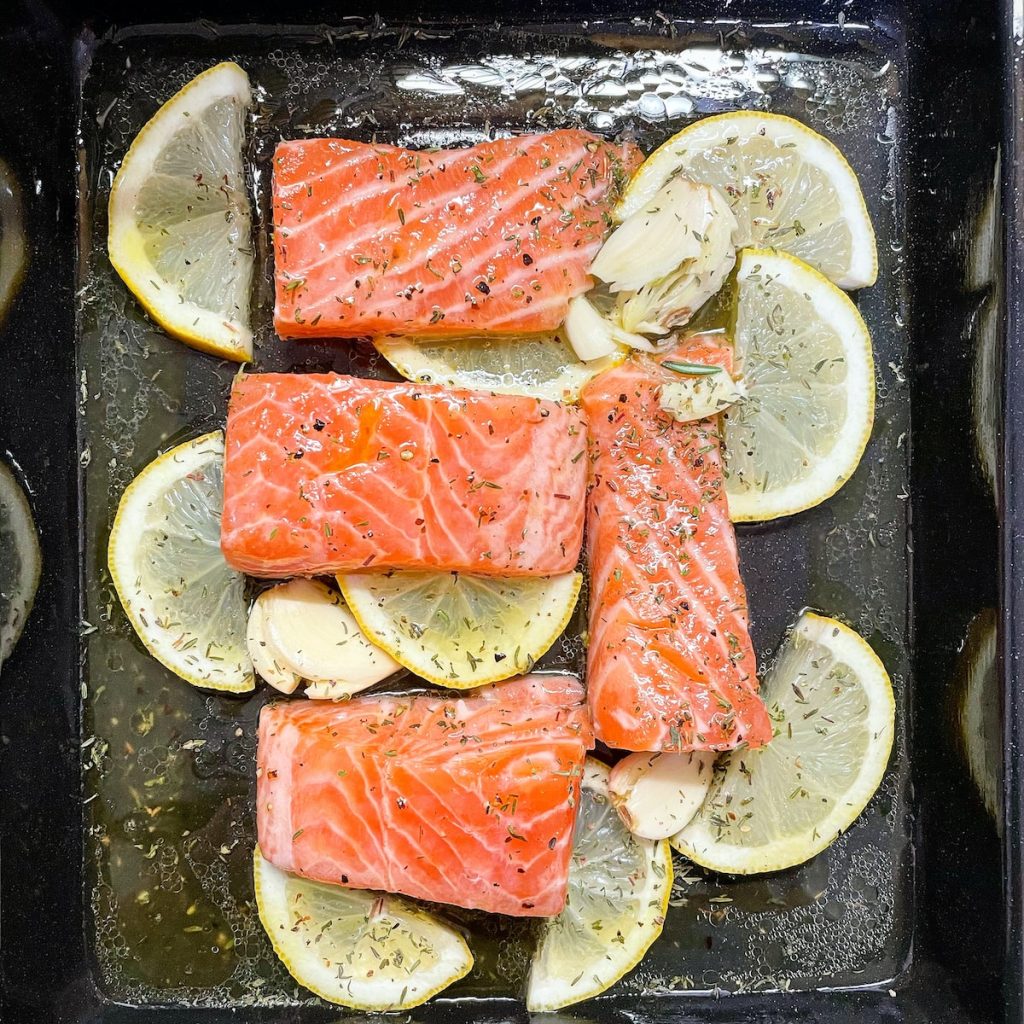
Then, prepare a foil-lined baking sheet and place the skin side of each fillet on the foil-covered sheet, making sure to space them apart adequately. The spacing will allow for even cooking and avoid sticking together. You can also add vegetables like asparagus or cherry tomatoes alongside the salmon for extra flavor and nutrients.
Place the baking sheet in the preheated oven’s center rack for approximately 5 to 10 minutes, depending on the fillet’s thickness. A good rule of thumb is to cook the salmon for about 4-6 minutes per half-inch of thickness, plus an additional 1-2 minutes for added doneness if necessary. In other words, if your salmon fillet is 1 inch thick, it should bake for about 10-12 minutes. Make sure not to overcook, so keep a watchful eye during the baking process. When the salmon easily flakes away with a fork and reaches your desired level of doneness, remove it from the oven.
Remember to let the salmon stay for a few minutes before serving to allow the juices to redistribute into the meat fully. Using these simple tips, you can quickly prepare perfectly cooked and delicious baked salmon in the oven.
2.Poaching is a cooking method that involves simmering salmon fillets in a liquid to create a tender, flaky, and naturally flavored dish. This is a great choice for health-conscious cooks who want to avoid heavy seasoning and cooking fats.
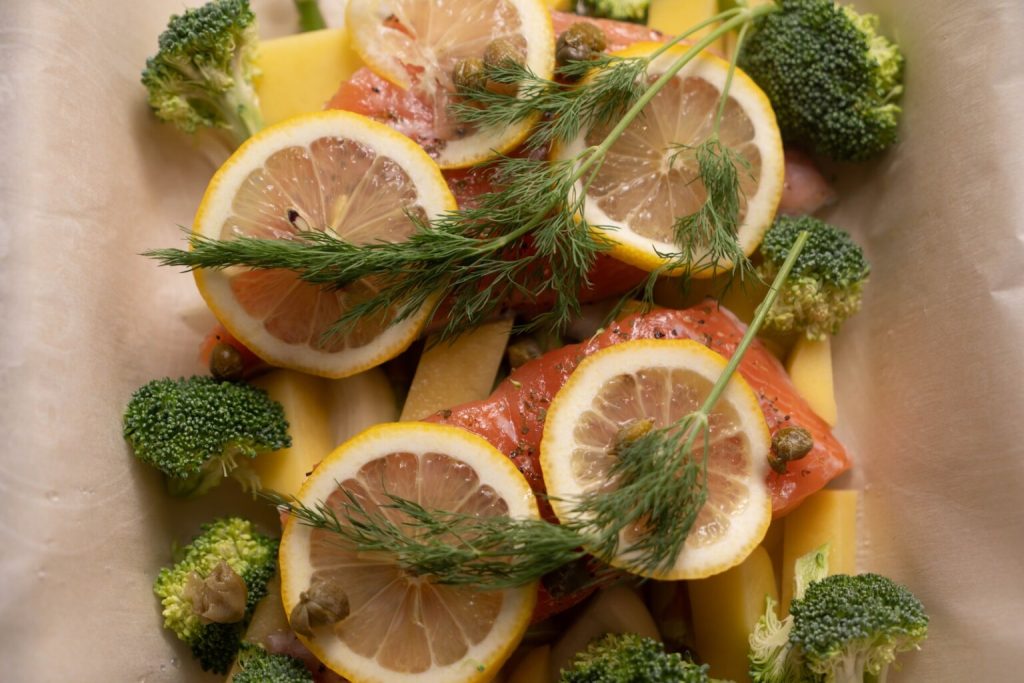
To poach salmon, start by adding a poaching liquid to a large non-stick skillet or heavy pot. This can be water, white wine, or stock with a pinch of salt, whole peppercorns, and a bay leaf. Bring the liquid to a boil, reduce heat, and simmer for 5 minutes.
Gently lower the salmon into the poaching liquid so that the fillets are fully covered (add more water if needed). Bring the liquid to a slow boil, then reduce heat and poach until salmon flesh is firm, which usually takes about 15 to 20 minutes.
This simple technique can produce excellent results and can be easily customized by adding herbs, lemons, or other aromatics to the poaching liquid. Once cooked, the poached salmon can be used as a base for salmon salads, fresh salmon cakes, or can be enjoyed on its own with a buttery white wine sauce or an herby basil pesto cream.
3.poaching salmon involves cooking it in acidic water over low heat, which helps to preserve the tender texture of the fish.
If you want a fat-free salmon recipe, poaching is a great option. Simply simmer your salmon fillets in water that covers the fish. Use a straight sided skillet or heavy pot and cook the fish on a low simmer until it becomes opaque, which usually takes about five minutes depending on the thickness of the salmon.
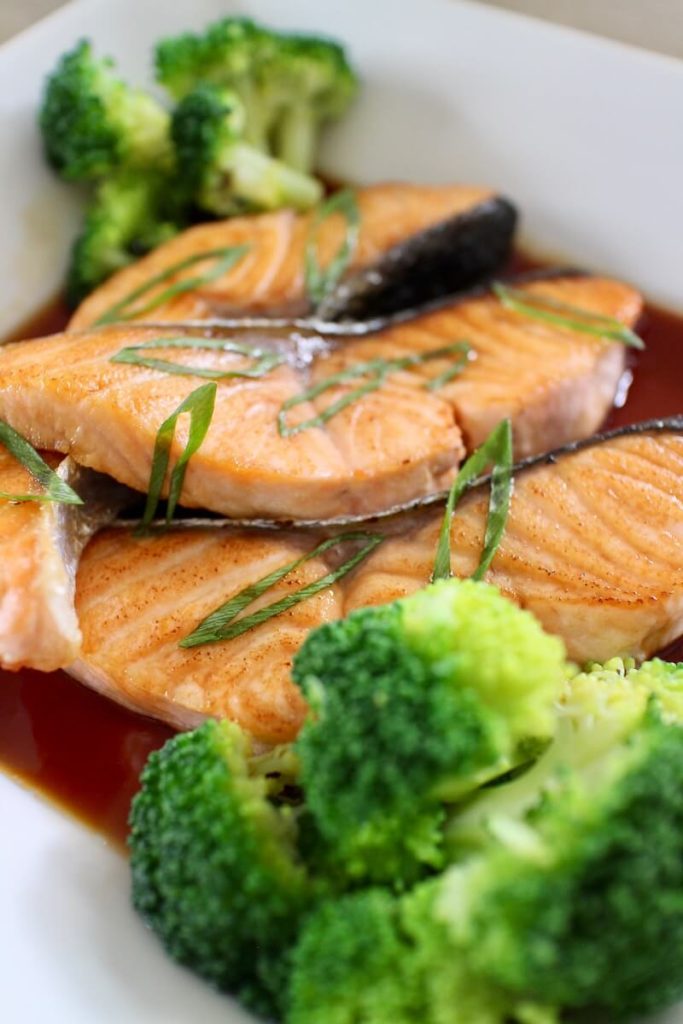
To add some flavor to your poached salmon, you can add various ingredients such as herbs, vegetables, white wine or even chicken stock to the water. For an easy and basic poached salmon, you can use a pinch of salt, pepper, garlic, parsley, and a squeeze of lemon once it’s done. Make sure that you have enough water to cover the fillets and experiment with flavors to find what works best for you.
4.Pan searing salmon is a popular cooking method that many cooks love because it allows them to showcase their talent in the kitchen. The method is quick, easy, and produces perfectly crispy, crunchy skin.
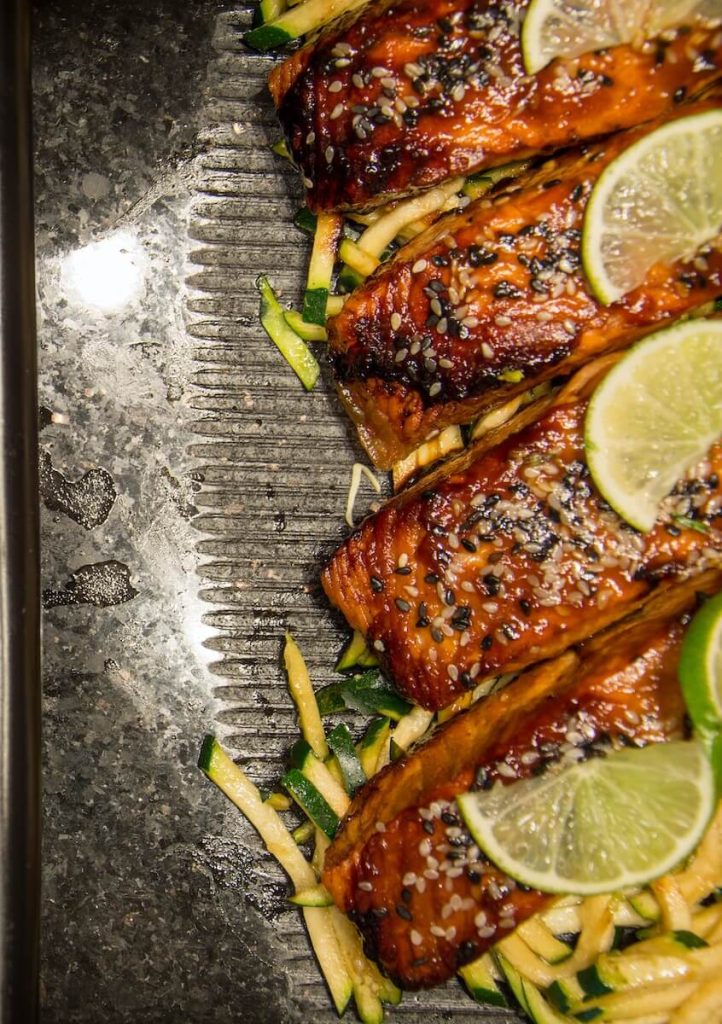
To prepare pan-seared salmon, season the fillets with salt and pepper, then add butter or oil to a large skillet and heat it to medium-high. Cook the salmon skin-side down for about 5-6 minutes, then flip it over and cook skin-side up for another 3-5 minutes or until done. Finish with a squeeze of lemon. To test salmon for doneness, use a knife to peek between the flakes of fish or insert a meat thermometer into the thickest part of the fillet and aim for a temperature of 125 degrees F.
Pan searing salmon is also a healthy cooking method, and to achieve a healthy and flavorful entrée, preheat the oven to 375 degrees F and preheat a large pan on high. Season the salmon with salt and pepper, then add oil to the pan. When the oil is hot enough, place the salmon skin-side up and let it sear for 30 seconds to 1 minute. Transfer the salmon to a baking dish skin-side down, and bake for 10-12 minutes or until it flakes easily with a fork.
When pan-searing salmon, use an oil with a high smoke point, such as canola oil, sunflower oil, or avocado oil. Avoid using oils with a low smoke point, like extra virgin olive oil, as they will burn in the pan and prevent a proper sear. Avoid moving the salmon once it’s in the pan to allow for a nice layer of caramelization to form on the fish, resulting in a beautiful sweetness and satisfying crunch.
5.Grilling salmon is an easy and popular method that adds a delicious smoky flavor to the dish. To grill salmon, start by brushing it with oil and your desired seasoning or rub. Make sure to pre-cut the salmon into the desired serving or plating size to make flipping easier.
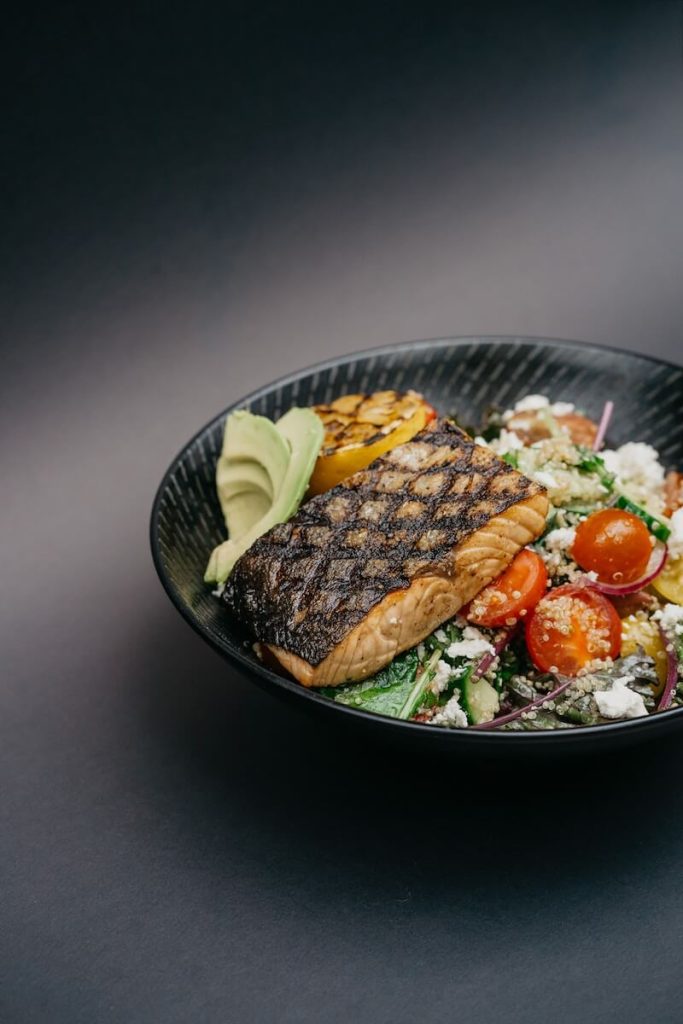
Get your grill hot before cooking, and once it’s ready, place the salmon skin-side down. Flip it after 5 minutes or when it becomes flaky. The smoky flavor the grill adds to the fish is one of the best things about this method.
To make sure you don’t lose any of the delicious fish inside the grill, use a fish basket or grate over the grill. Clean and oil the grill before preheating it to 450 degrees F (232 degrees C). Dry your salmon well on both sides and add olive oil, salt, and pepper on both the skin side and flesh side of the salmon.
Put the skin side down first on the BBQ grill and close the lid. After the 5-6-minute mark, gently turn the grilled salmon over and grill for another minute or until the fish flakes easily with a fork. You can serve it with or without the skin, depending on your preference.
Grilled salmon is a favorite dish for many, and you can try adding different toppings to it, such as an easy mango salsa, to make it even more delicious.
